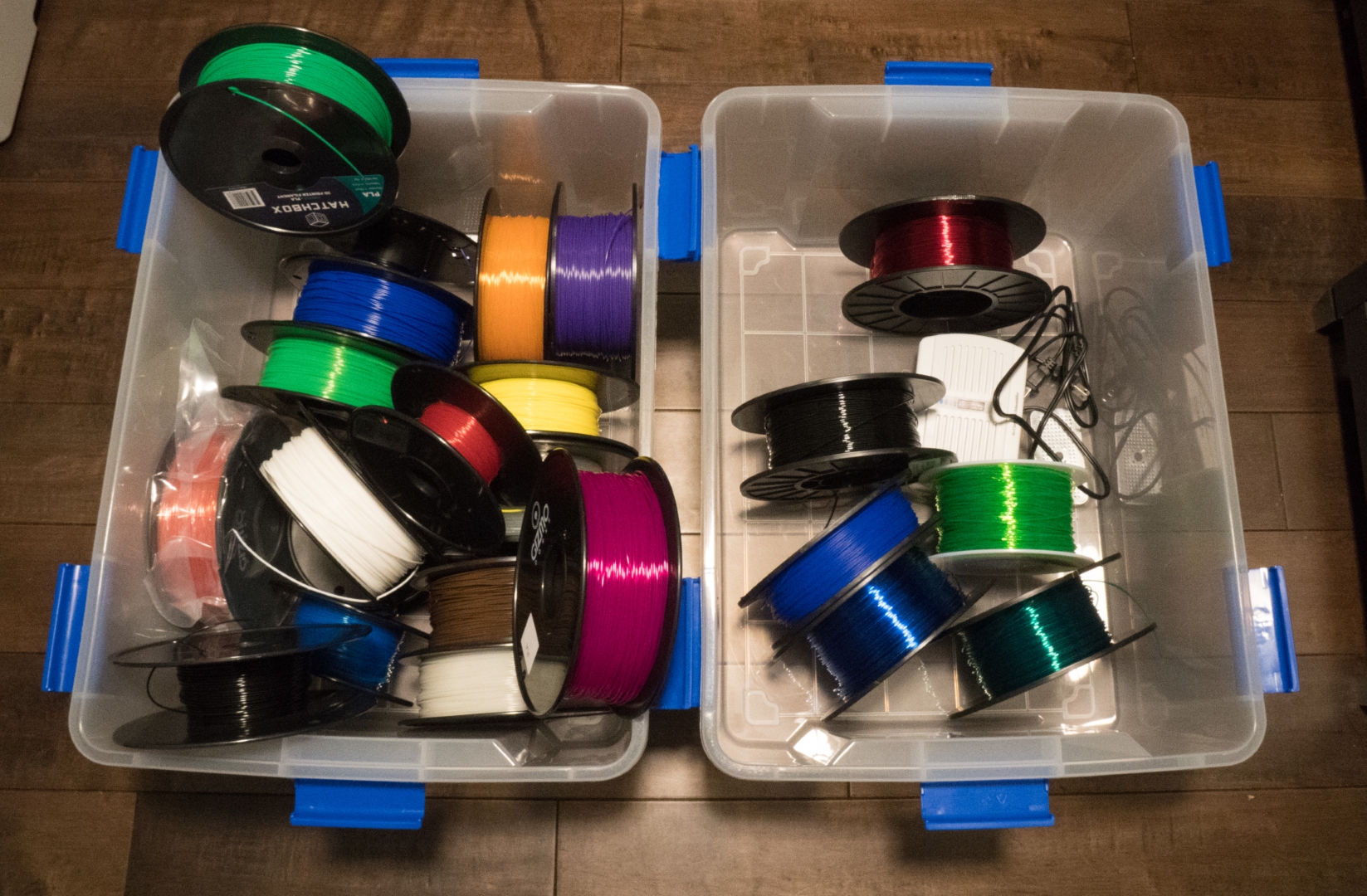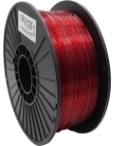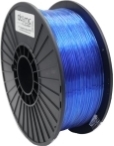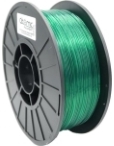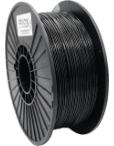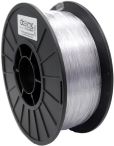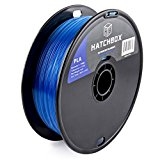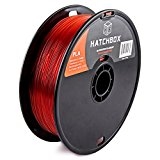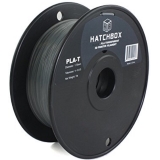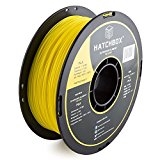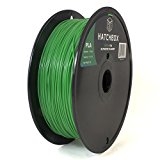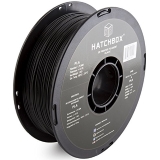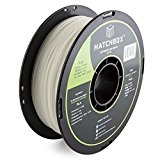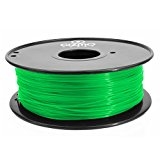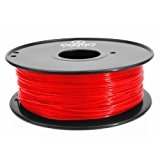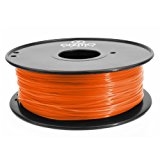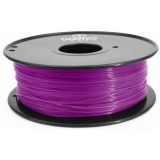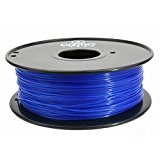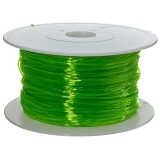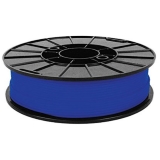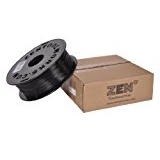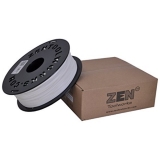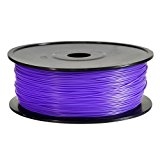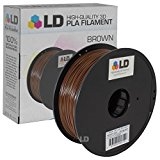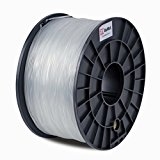I wanted to take a moment to call out some filaments I really like and that I’ve had good luck with. This is not meant to be an in-depth, exhaustive filament review. In the future, I may go into much greater detail on all the different types of filament, their strengths and weaknesses, specific brands I’ve had good/poor success with, etc. This is merely a quick list of those filaments I’m currently using and have had good luck with.
Before we dig in, I want to thank Walter Hsiao. He runs thrinter.com where he does a much better job of reviewing filaments than you’ll see here. He is also fairly prolific on Thingiverse, so checkout his designs. Much of what you’ll see in this site has been inspired by him, so checkout his site and support him.
I’ll preface this by telling you up front I haven’t experienced the typical horror stories with filament others have.
Jams? I don’t get them. I’ve never really gotten a printhead jam. At least nothing that required more than heating the hotend up to printing temperature or just above and pulling the filament out of the top with a pair of pliers.
“Wet” filament? Meh. Maybe I’m not picky enough to notice, but I don’t seem to have the same battles between humidity and filament others do. I don’t get a ton of popping and cracking indicative of filament that has absorbed too much moisture. For context, I live in Kentucky, so it’s reasonably humid without being a total armpit like some parts of the deep South. The armpit reference is to the humidity, not the people or culture. Save your hate mail. That being said, I’m not blind to the perils of wet filament. To help combat the issue, I store my filament in sealed boxes with desiccant and/or a dehumidifier. Admittedly, I’m not super diligent about refreshing the desiccant/dehumidifier, but I still don’t run into significant problems. My guess is if I start printing moisture prone filaments such as nylon, I’ll have to be more careful.
Poor tolerances? Keep calm and print on. If I don’t adjust for them, do some filaments over or under extrude in comparison to others? Sure. Have I had ruined prints as a result of filament being so out of spec my printers couldn’t handle them? Almost never.
With that out of the way, and a basic understanding that my printers and I are fairly tolerant of things, let’s get to the fun stuff, shall we?
Atomic Filament PETG
To avoid burying the lead, this is undoubtedly my favorite filament to date.
PETG/PET+ is quickly becoming the darling of the 3D printing world because it’s easier to print than ABS (less warping), but much more durable than PLA (much less brittle).
Their prices are reasonable (there are cheaper PETG/PET+ options), shipping is free, and their customer service is great. As an example, I ordered a few spools a while back and one of the colors was out of stock. They contacted me shortly after I placed the order to let me know and gave me the option of cancelling the order, substituting the out of stock color for another, or waiting on the color to come back in stock. I chose to wait on the color to come back in stock because I wasn’t in a hurry to get it. They gave me an estimate of when it would be available, and much to my surprise, they fully loaded the spool with as much as would fit for the inconvenience. I didn’t weigh it, but it was roughly 50% extra. That was an unneeded, but very nice touch.
Hatchbox PLA
This has been my primary brand for PLA from very early on. Their prices are good ($20-$25 USD), available on Amazon, and often with free shipping. I get great results with this on both a Printrbot Simple Metal (with and without a heated bed) and a Wilson2. The downside with Hatchbox is the availability. It’s hit or miss. If you can find it for $25 or less in the color you want, grab it. You’re unlikely to be disappointed.
Gizmo Dorks PLA
When I can’t find the color I want from Hatchbox, I turn to Gizmo Dorks. It’s typically a few bucks more expensive, but is still reasonable, and I get good results with it. The availability of specific colors is also fleeting, so jump on good deals/colors when you see them. One word of caution is their images in Amazon don’t always match the end product. The translucent blue and purple performed fine, but the colors weren’t exactly as depicted. The purple was more of a magenta (i.e., too pink). The blue wasn’t very translucent and wasn’t as deep (i.e., not royal) as depicted. The green, orange, and 2 different spools of red were all spot on though.
Flexible
Both of the brands listed below classify their filament as TPU. In my experience, SainSmart is much more like the TPU I know, which is considerably more rigid than TPE. That brings me to NinjaFlex. While they now list it as TPU, it performs much more similarly to TPE, which is more flexible than TPU. Keep this in mind when printing. Your mileage may vary, but that has been my experience in the spools I have. The NinjaFlex is more difficult to print, so print S-L-O-W-L-Y and ensure you have the smallest gap possible between your extruder/Bowden tube and the top of your hotend.
Others I’ve had reasonable success with…
These brands are what I go to if there’s a specific color I’m looking for but can’t find in my mainstay brands above. I didn’t find anything inherently wrong with these brands. All extruded without jams, and print quality was acceptable. They’re not included above because they’re either more expensive than the brands mentioned above, or my print quality wasn’t quite as good with these.
Next on my list to try…
- Atomic Filament PLA – Their PETG is amazing. I assume their PLA will be too.
- eSun PETG – Because saving a few bucks is always nice. I read it warps more than some other PETG. Guess we’ll find out.
- Taulman Nylon Bridge – Supposedly easier to print than the 910 below.
- Taulman Alloy 910 – Supposedly more rigid than the bridge above.
- “Exotics” – Metal, wood, carbon fiber, polycarbonate, etc.
If you have any questions or suggestions, let me know in the comments.

